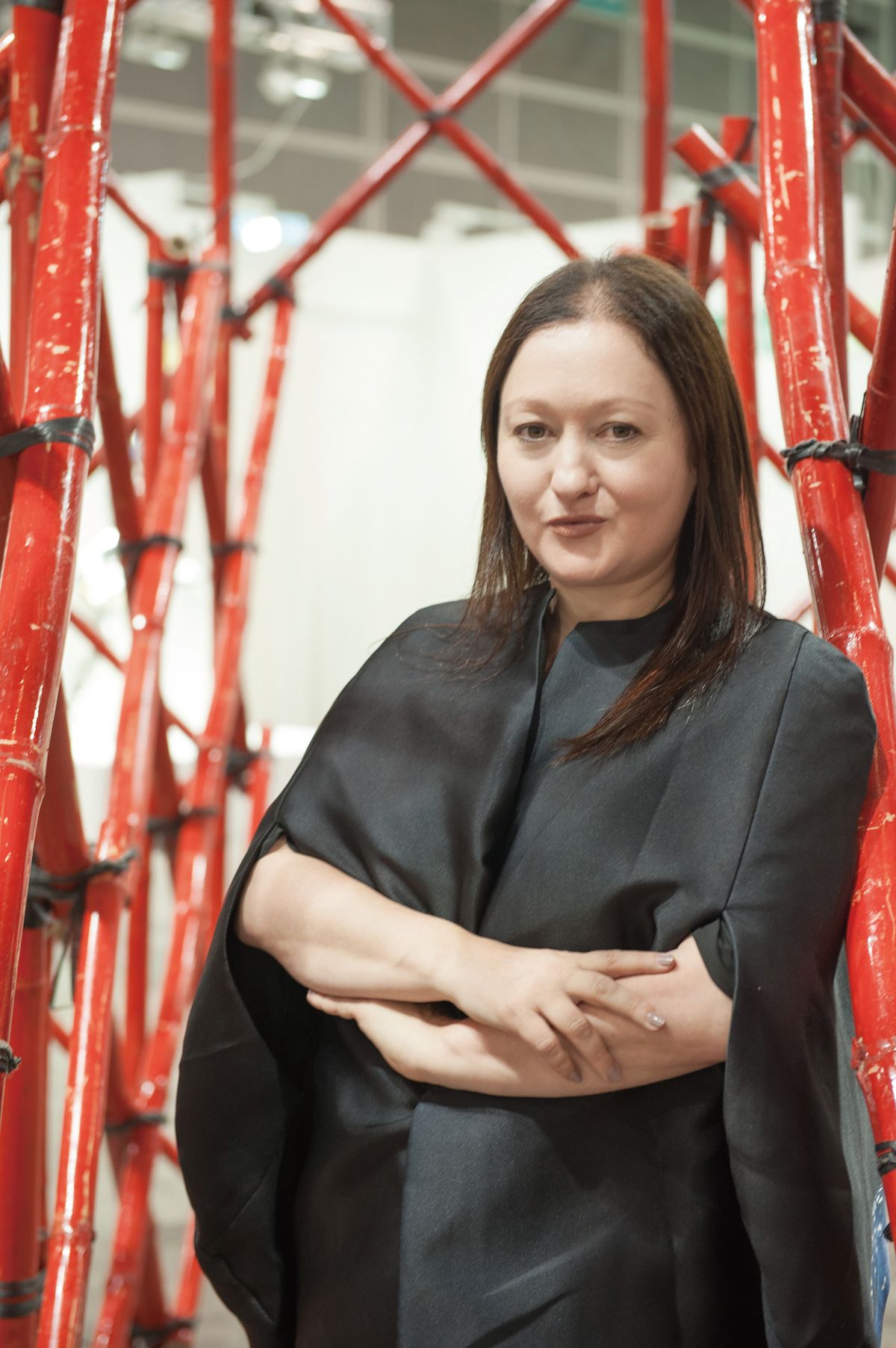Space is paramount in the Encounters section of Art Basel in Hong Kong, where each large-scale installation occupies up to 100 square metres. But time is equally important to Alexie Glass-Kantor, the curator of Encounters for the third year running. All but one of the 17 works she has chosen—12 of them new commissions—line what she calls the fair’s four “meridians”. The name recalls the concept in Chinese medicine by which energy flows through the body as well as the longitudes that divide the world’s time zones.
Glass-Kantor hopes this year’s Encounters will “slow down” the fair’s 70,000 visitors and invite experiences that linger. “I think about Encounters as landmarks,” she says. “I try with each meridian to knit the works together so the audience doesn’t have to read the text, but I hope people will spend time.”
Visitors are encouraged to sit beside Michael Parekowhai’s fallen cherub and to seek out Joyce Ho’s trio of interactive performance spaces—the fair’s first “hidden encounter”. Meanwhile, works by Dinh Q. Lê and Gonkar Gyatso reflect on the timely issues of migration and globalisation. “I don’t think an art fair is a neutral space,” Glass-Kantor says. “You have to have works that trespass beyond aesthetic surfaces.”
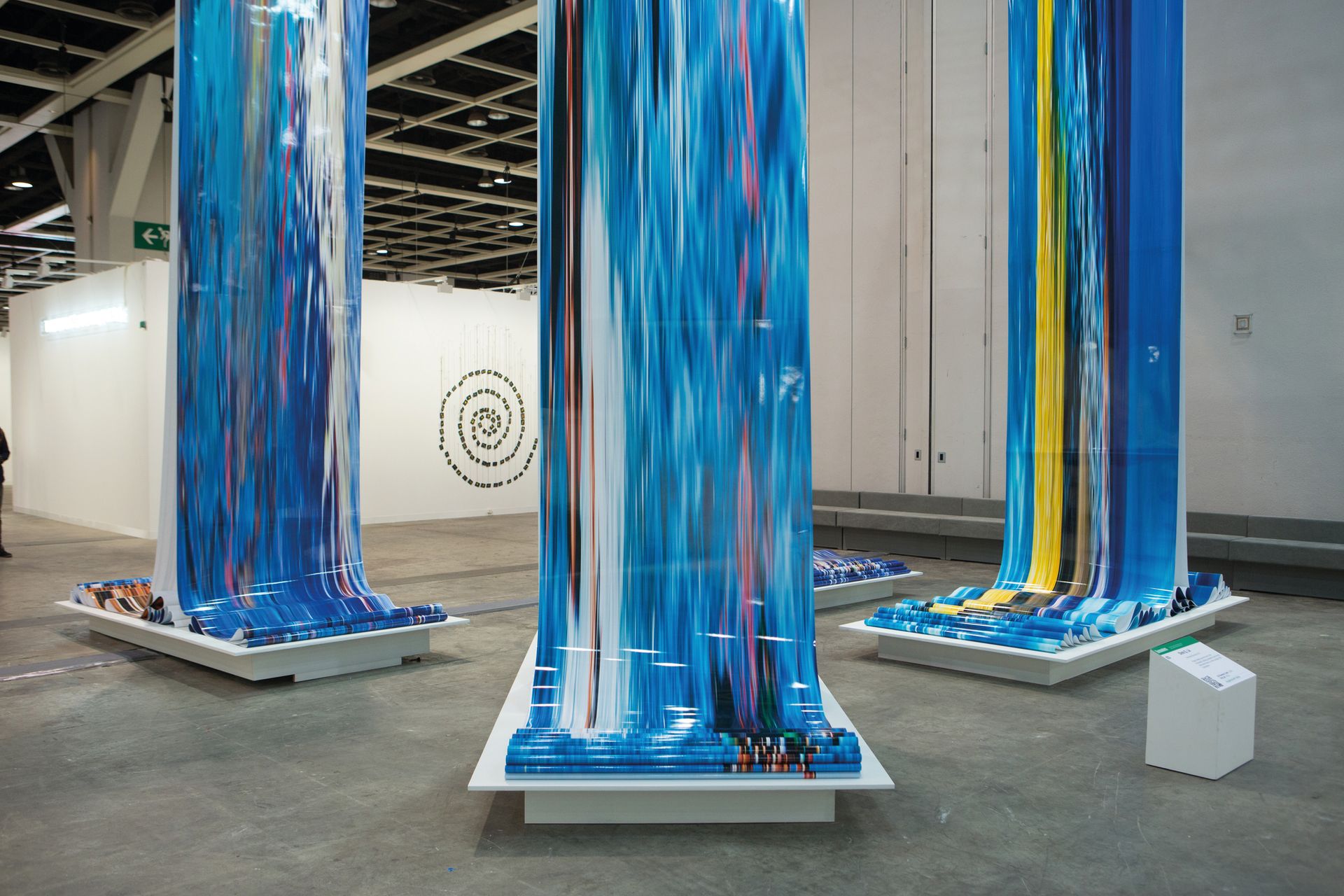
Dinh Q. Lê, The Deep Blue Sea (2017) 10 Chancery Lane and P.P.O.W
“Dinh has taken four news images of people who are seeking asylum in the Mediterranean. One is of a boat that sank and everyone upon it perished. Mass migration is not new in history but the way we see it represented through the media is very particular. It’s abstracted here into a distorted colour field. These flashes of orange are life jackets. A kind of abstraction occurs through the surplus of these images—we don’t see other people’s suffering as connected to us any more. These swathes of photographic print are remarkable technically. Dinh was thinking about them as a way of extending photography into sculpture.”

Joyce Ho, On the second day, Saturday, Your three minutes… (2017) TKG+
“Joyce comes from a dance and performance background and likes to create the circumstances where people commit to a different encounter with a stranger. Here you have three mise-en-scènes of encounters where you make a commitment to observing and being seen. One is a work where the audience is invited to pause for a moment. I like the simple act of sitting and seeing yourself reflected in someone else at a fair. In another, Your three minutes, you’ll be served a drink and refreshments. You can speak or not—it’s your space, your time.”
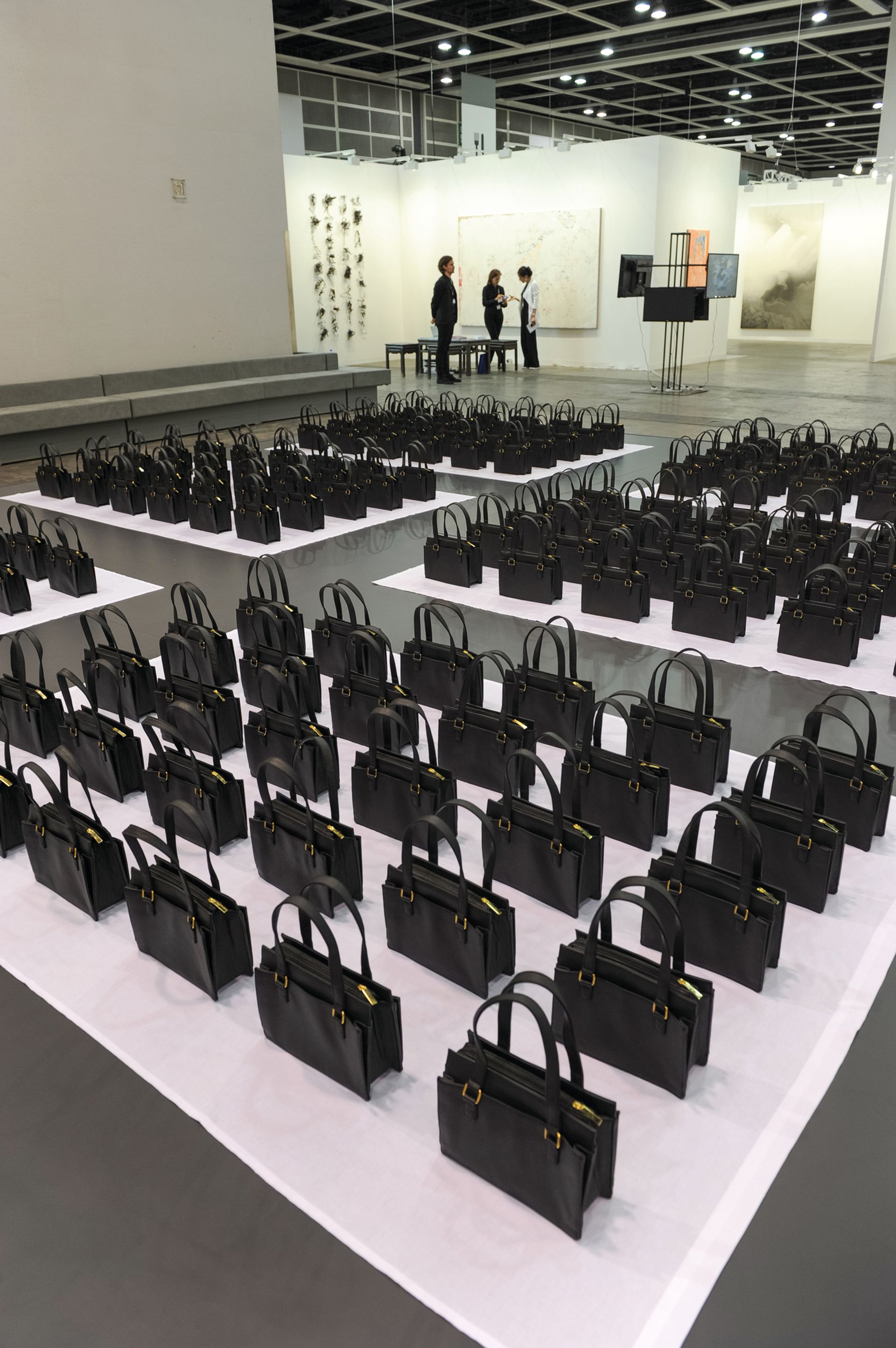
Pio Abad, Not a shield, but a weapon (2016) Silverlens
“Pio’s practice often looks at appropriation; the way that things lifted from their context can be altered. In this case, he’s taken Margaret Thatcher’s Asprey handbag and created 180 replicas in the Philippines in immaculate detail. They’re lined up as if they’re being sold as counterfeit goods on the streets of a city like Hong Kong. I love the conversation between Communist leaders lying in state [Shen Shaomin’s Encounters work nearby, Summit (2009-10)] and the mausoleum effect of the ubiquitous handbag repeated.”

Rirkrit Tiravanija, Untitled 2017 (no water no fire) (2017) neugerriemschneider
“Rirkrit’s new work is a labyrinth into which he’s inserted a series of plinths that appropriate Constantin Brancusi’s wooden plinths. Atop them are bonsai plants. Bonsai traditionally required great care and attention, but who has time any more to nurture the bonsai tree? Rirkrit’s bonsai are made through 3D laser printing. The living material of the pedestal is itself an appropriation of Brancusi. Rirkrit has worked with bamboo before. It’s so familiar and readily available in this region. I love that audiences here will make contact in a different way with something that you see on the streets.”
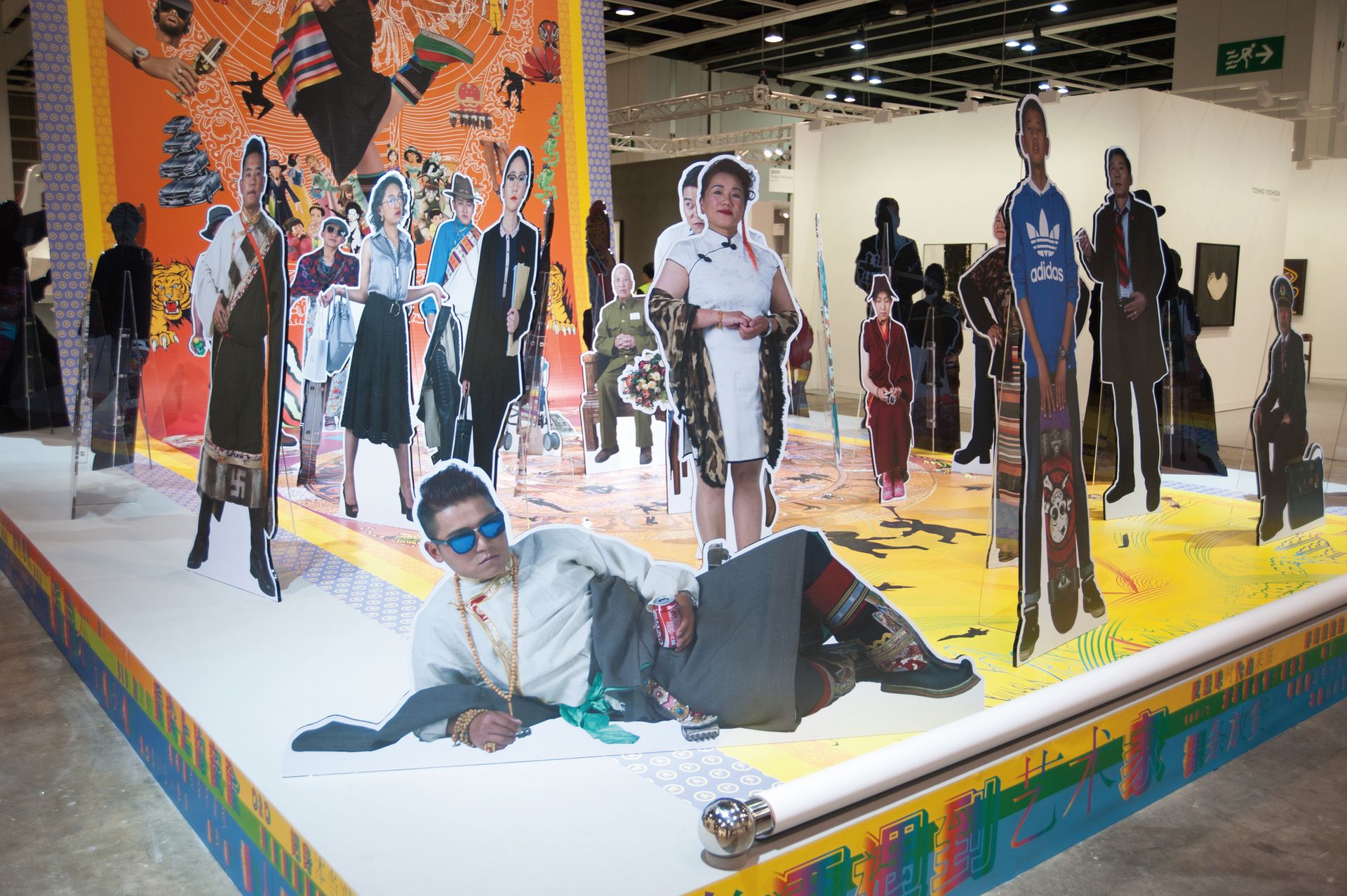
Gonkar Gyatso, Family Album (2016) Pearl Lam
“Gonkar is of Tibetan heritage and this is an extraordinary mise-en-scène of 30 members of his family as cut-outs with three different types of persona. They’re wearing clothes that speak to traditional Tibetan culture, clothes that speak to their everyday life and an outfit in their professional guise. He wanted to look at how the introduction of new goods and commodities is shaping a new kind of Tibet. What does it mean if a previously closed society evolves at such an accelerated pace? Who is at the frontline of experiencing that change? I wanted those people at the frontline of Art Basel in Hong Kong.”
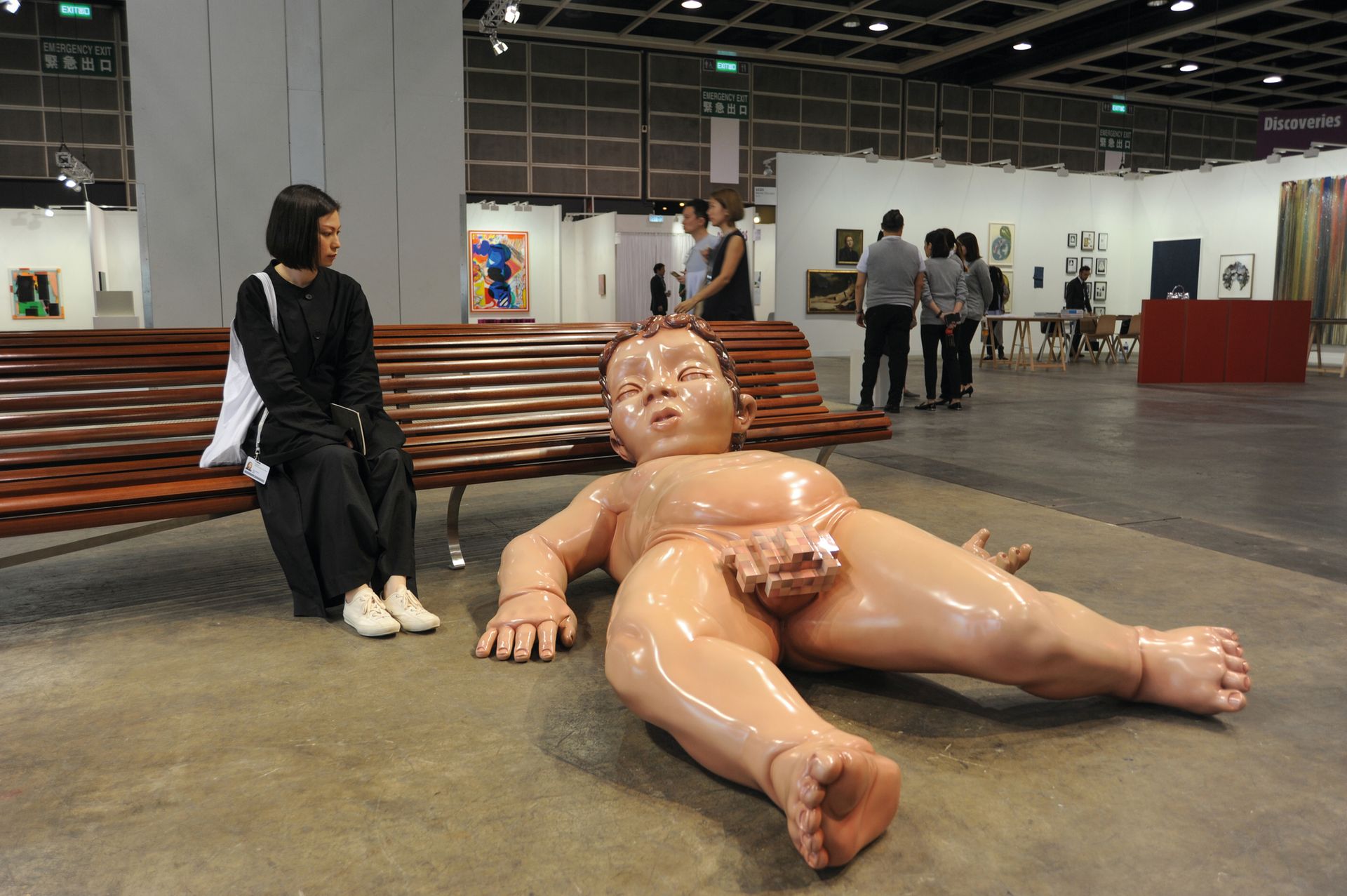
Michael Parekowhai, Putto (2015-16) Roslyn Oxley9
“Michael sent through this wonderful, quite mad proposal for a work called Putto, which is a type of Baroque angel. The audience is invited to sit on a bench beside this putto, which is lapsed and slumped among us. There’s no more grandeur. The exalted angel figure has collapsed. I love its sagging flesh. The fig leaf that the putto would wear has been replaced by pixels. In the 21st century, our figure falls from grace and into a new digital space. It’s funny and I like humour in art. I like the way this work challenges conventions of taste.”


